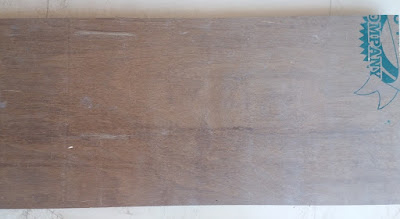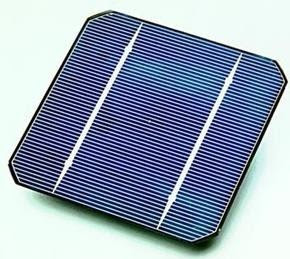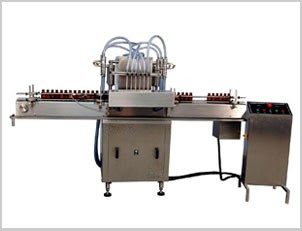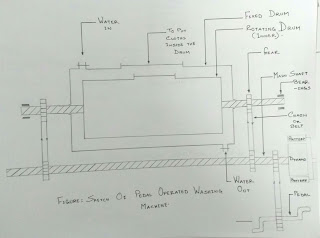EXPERIMENTAL ANALYSIS OF TRIPLE EFFECT SOLAR STILL WITH EVACUATED TUBES
ABSTRACT
Distillate water is basic
need of human. Two by third of earth is covered with water. But this water is
saline water only 0.1 percentage water available on earth is pure water. This
pure water is polluted by humans. So, today strong needs for producing distill
water from saline water by using solar energy. But solar desalination is not
found most promising technology for potable water due to its lower efficiency
and productivity. Present work exhibits the innovative design of triple effect
solar still integrated with evacuated tubes for enhancement of productivity or
distillate output. Present still produces 20 litre per day portable water and
efficiency enhancement of 566.67% compare with conventional solar still.
1.1
Introduction:
Water is a basic necessity of man along
with food and air. Fresh water resources usually available are rivers, lakes
and underground water reservoirs. About 71% of the planet is covered in water,
yet of all of that 96.5% of the planet's water is found in oceans, 1.7% in
groundwater, 1.7% in glaciers and the ice caps and 0.001% in the air as vapour
and clouds, Only 2.5% of the Earth's water is freshwater and 98.8% of that water
is in ice and groundwater. Less than 1% of all freshwater is in rivers, lakes
and the atmosphere. Solar energy is
available in abundance and considered the easiest and cleanest means of tapping
renewable energy. All forms of energy on the earth are derived from sun.
However, the more conventional forms of energy. No significant polluting
effects. Only one percentage of earth’s water is in a fresh, liquid state and
nearly all of this is polluted by both diseases and toxic chemicals. For this
reason, purification of water supplies is extremely important. A device which
will convert the dirty/ saline water in to pure/ potable water using the
renewable source of energy called solar still.A basin of solar
still has a thin layer of water, a transparent glass cover over the water is
covered the basin and channel for collecting the distillate water from solar
still. The glass transmits the sun rays through it and saline water in the
basin or solar still is heated by solar radiation which passes through the
glass cover and absorbed by the bottom of the solar still. In a solar still,
the temperature difference between the water and glass cover is the drinking
force of the pure water yield. It influences the rate of evaporation from the
sun surface of the water within the basin flowing towards condensing cover.
Vapour flows upwards from the hot water and condensate. This condensate water
is collected through a channel.Solar Distillation is by far the most
reliable, least costly method of 99.9% true purification of most types of
contaminated water especially in developing nations where fuel is scarce or too
expensive. Solar distillation is used to produce drinking water or to produce
pure water for lead acid batteries, laboratories, hospitals and in producing
commercial products such as rose water.
Water Purification:
It is the process of removing undesirable chemicals,
biological contaminants, suspended solids and gases from contaminated water.
The goal is to produce water fit for a specific purpose. Most water is purified
for human consumption (drinking water), but water purification may also be
designed for a variety of other purposes, including meeting the requirements of
medical, pharmacological, chemical and industrial applications. In general the
methods used include physical processes such as filtration, sedimentation, and
distillation, biological processes such as slow sand filters or biologically
active carbon, chemical processes such as flocculation and chlorination and the
use of electromagnetic radiation such as ultraviolet light.
Options for water
purification:-
There are four
possible ways of purifying water for drinking purpose:-
1.
Distillation
2.
Filtration
3. Chemical
Treatment
4. Irradiative
Treatment
Considering the
areas where the technology is intended to be used we can rule out few of the
above mentioned methods based on the unavailability of materials or costs.
Chemical treatment is not a stand-alone procedure and so is irradiative
treatment. Both can act only remove some specific impurities and hence can only
be implemented in coordination with other technologies. This analysis leaves us
with two methods – Distillation and Filtration. By weighting the Positive and
negatives of both the methods we decided to go by the first one. The most important
considerations were that of complexity, higher maintenance and subsequent costs
coupled with need of other sophisticated supporting equipment.
1.3 Benefits of Distillation:
1. It
produces water of high quality.
2.
Maintenance is almost negligible.
3. Any type of
water can be purified into potable water by means of this process.
4. The system
will not involve any moving parts and will not require electricity to Operate.
5.
Wastage of water will be minimum.
Types of
solar still:
- Single slope solar still
- Spherical Circular Still
- Hemispherical Solar Still
- Double-Basin Glass Solar Still
- Tubular Solar Still
- Pyramid Solar Still
Working Principle:
Solar still
is an airtight basin that contains saline or contaminated water (i.e. feed
water). It is enclosed by a transparent top cover, usually of glass or plastic,
which allows incident solar radiation to pass through. The inner surface of the
basin is usually blackened to increase the efficiency of system by absorbing
more of the incident solar radiation. The feed water is heated up, starting to
evaporate and subsequently condensed on the inside of the top cover, which is
at lower temperature as it is in contact with the ambient air. The condensed
water (i.e. the distillate) flowing down the cover is collected in a collecting
trough and then stored in a separate Basin.
Fig.1.7 Solar still
Solar Still with Multi Effect
Many Researchers had done
work on different design of solar still. The main problem coming in solar still
with design point of view is its low productivity due to latent heat loss. The
thermal efficiency of a solar distillation unit in terms of daily Production
per m2 can be increased by utilizing the latent heat of condensation. The
reutilization of latent heat of condensation, for further distillation, can be
carried out as Double-effect distillation. When more than two stages are
involved, this is generally known as a multi-effect distillation system. As
increase in basin material required for still also increase. However, with the
additional cost incurred in the more complicated multi-effect still.
Fig.1.8 Double basin solar still
MODLLING OF SOLAR STILL
Components of solar still:
Plywood:
Plywood is a sheet material manufactured from thin layers or
"plies" of wood veneer that are glued together with adjacent layers having their wood grain rotated up to 90
degrees to one another. Number of types of plywood is available with variety in
thickness and sizes. Plywood is used in
many applications that need high-quality, high-strength sheet material. Quality
means resistance to cracking, breaking, and shrinkage, twisting and warping.
For construction of triple effect solar
still 8×4 plywood sheet is used. A sheet is 19mm thick. The figure of plywood
sheet is given below:
Fig.3.1 Plywood
Corrugated metal sheet:
Corrugated galvanised iron or steel is
a building material composed of sheets
of hot-dip galvanised mild steel, cold-rolled to produce a linear
corrugated pattern in them. The corrugations increase the bending strength of
the sheet in the direction perpendicular to the corrugations, but not parallel
to them. The corrugations are described in terms of pitch (the distance between
two crests) and depth (the height from the top of a crest to the bottom of a
trough). Corrugation process is carried out using the process of roll forming for production of GI sheet. Galvanised metal sheet has lowest first cost, Reliability, Long
life, higher strength etc For construction of solar still corrugated
sheet with 50mm in pitch length is used. In upper and lower basin black painted
corrugated sheet is placed which maintain water on its upper surface. For
increase in productivity it is corrugated at 45deg.
Fig. 3.2 Corrugated metal sheet
Pvc pipes:
Plastic pipe is a tubular section, or hollow cylinder, made of plastic. It is usually, but
not necessarily, of circular cross-section, used mainly to convey substances
which can flow like liquids and gases (fluids), slurries, powders and masses of
small solids. Plastic
pipes are capable of fulfilling the specific requirement for each application. Two aspects are fundamentally
important for the performance of plastic pipes: flexibility and long lifetime.
For construction of plastic pipes different materials used are ABS (acrylonitrile
butadiene styrene), UPVC (unplasticized
polyvinyl chloride), CPVC (post chlorinated polyvinyl chloride),
PB-1 (polybutylene), PP (polypropylene). To collect distillate from condensing surface from all three basins it
is used in solar still and also for supply of water above condensing cover as
cooling medium.
The figure
of plastic pipe is given below:
Fig.3.3 Pvc pipes
4. Mirror:
A mirror is an object that reflects light in such a way that, for incident light in some range of
wavelengths, the reflected light preserves many or most of the detailed
physical characteristics of the original light. Mirrors are manufactured by
applying a reflective coating to a suitable substrate. The most common substrate is glass, due to its
transparency, ease of fabrication, rigidity, hardness, and ability to take a
smooth finish. The
mirror substrate is
shaped, polished and cleaned, and is then coated. Glass mirrors are most often
coated with silver or aluminium, implemented by a series of coating
with materials like Tin chloride, Silver,
Chemical activator, Copper, Paint.In solar still irradiation goes outside of
basin which cause heat loss and reduce temperature of basin.so mirror is placed
at one surface of solar still which reflect solar radiation back to the basin
and increase temperature of solar still.
The figure of mirror
used in solar still is given below:
Fig.3.4 Mirror
5. Mild steel sheet:
Sheet metal is metal formed by an industrial
process into thin, flat pieces. It
can be cut and bent into a variety of shapes. Sheet metal is used in automobile
and truck (lorry) bodies, airplane fuselages and wings, medical tables, roofs
for buildings (architecture) and many other applications. It offers good corrosion resistance
while maintaining formability and weld
ability.
Fig. 3.5 Mild steel sheet
6. Thermometer:
A thermometer is a device that measures temperature or a temperature gradient. A thermometer has two important elements: (1) a temperature
sensor (e.g. the bulb of a mercury-in-glass
thermometer) in which some physical
change occurs with temperature, and (2) some means of converting this physical
change into a numerical value (e.g. the visible scale that is marked on a
mercury-in-glass thermometer). Thermometers utilize a
range of physical effects to measure temperature. Temperature sensors are used
in a wide variety of scientific and engineering applications, especially
measurement systems. Thermometers are used in roadways in cold weather climates
to help determine if icing conditions exist. Indoors, thermistors are used in climate
control systems such as air conditioners, freezers, heaters, refrigerators, and water heaters.[48] Galileo thermometers
are used to measure indoor air temperature, due to their limited measurement
range.
Figure of Temperature
sensor and Bi-metallic stem thermometer is given below:
Fig.3.6 Thermometer
7.
Evacuated tubes:
Evacuated
heat pipe tubes (EHPTs) are composed of multiple evacuated glass tubes each containing an absorber plate fused to a heat pipe. The
vacuum that surrounds the outside of the tube greatly reduces convection and conduction heat loss, therefore
achieving greater efficiency than flat-plate collectors, especially in colder
conditionsThere are six evacuated tubes placed in
bottom basin for higher heating rate and increase productivity. Figure of
evacuated tube is given below:
Fig. 3.7 Evacuated tubes
8.
Silicon rings:
Silicon ring is used to assemble solar basin and evacuated tube.it
provide leak proof joint between to different components where water is used as
working medium. Silicon ring has higher flexibility so it is widely used in
solar heater. For assembly of bottom basin and evacuated tube it is used.
Figure of silicon ring is given below:
Fig.3.8 Silicon rings
9.
Glass:
Glass is a non-crystalline amorphous solid that is often
transparent.
Silica is a common fundamental constituent of glass. Glass has the ability to refract, reflect, and transmit light following geometrical optics, without scattering it. It is used in the manufacture of lenses and windows For transmit solar in to the upper basin glass is provided taper in 23deg with horizontal. The distil water evaporate in basin and condense on glass cover.
Silica is a common fundamental constituent of glass. Glass has the ability to refract, reflect, and transmit light following geometrical optics, without scattering it. It is used in the manufacture of lenses and windows For transmit solar in to the upper basin glass is provided taper in 23deg with horizontal. The distil water evaporate in basin and condense on glass cover.
Figure of simple glass with 4 mm thickness is given below:
Fig.3.9 Glass
3.2 Design
Consideration:
Different
designs of solar still have emerged. The single effect solar still is a
relatively simple device to construct and operate. However, the low
productivity of the Solar still triggered the initiatives to look for ways to
improve its productivity and Efficiency. These may be classified into passive
and active methods. Passive methods include the use of dye or charcoal to
increase the solar absorptivity of water, applying good insulation, lowering
the water depth in the basin to lower its thermal capacity, ensuring vapour
tightness, using black gravel and rubber, using floating perforated black
plate, and using reflective side walls. Active methods include the use of solar
collector or waste heat to heat the basin water, the use of internal] and
external condensers or applying vacuum inside the solar still to enhance the
vaporation/condensation processes, and cooling the glass cover to increase the
temperature difference between the glass and the water in the basin and hence
increases the rate of evaporation. Single-basin stills have been much studied
and their behaviour is well understood.
The efficiency
of solar stills which are well-constructed and maintained is about 50% although
typical efficiencies can be 25%. Daily output as a function of solar
irradiation is greatest in the early evening when the feed water is still hot
but when outside temperatures are falling. At very high air temperatures such
as over 45ºC, the plate can become too warm and condensation on it can become
problematic, leading to loss of efficiency.
a. Conduction
Q = - k A dT / dx
b. Convection
Q = h A (Tsurface- Tambient)
Both the losses
are greatly dependant on the area and temperature difference between the medium
i.e., water and ambient. Hence if we can reduce temperature of the whole system
we can reduce the heat loss and hence improve the efficiency. But reducing
operating temperature will come at the cost of lower rated of evaporation and
consequently lower rated of condensation leading to slower distillation. So now
the problem boils down to increasing the rated of evaporation at lower
temperature.
(Mass loss rate)
/ (Unit area) = (Vapour Pressure - Ambient Partial Pressure) * sqrt (Molecular Weight)/ (2*pi*R*T)
The Vapour
Pressure of a liquid at a given temperature is a characteristic property of
that liquid. Vapour pressure of a liquid is intimately connected to boiling
point. Vapour Pressures are influenced by Temperature logarithmically and this
relationship is defined with the Clausius Clapyron Equation:
Log P2 / P1 = Delta H vaporization [1 / T1 - 1/T2] / 2.303
(R)
Where:
R =
universal gas law constant = 8.31 J/mol-K = 8.31 X 10-3 Kj / mol-K
P1
and P2 = Vapour pressure at T1 and T2
T1
and T2 = Kelvin Temperature at the initial state and final state
3.3 Estimation of the quantity of output water:
Where:
A = Aperture area of the
still in m2
E = Efficiency of the
still
G = Global radiation
energy in MJ/m 2
3.4 Dimensions of still:
|
No.
|
Parameter
|
Value(mm)
|
|
1.
|
Area of still
|
1000×500mm
|
|
2.
|
Total Height of
still
|
625mm
|
|
3.
|
Height of First
Basin
|
200mm
|
|
4.
|
Height of second basin
|
175mm
|
|
5.
|
Height of third basin
|
200mm
|
|
6.
|
Glass slope angle
|
23degre
|
|
7.
|
Length of evacuated tubes
|
1800mm
|
|
8.
|
Inner diameter of evacuated tubes
|
48mm
|
|
9.
|
Outer diameter of evacuated tubes
|
56mm
|
|
10.
|
Evacuated tube slope angle
|
33degre
|
|
11.
|
Thickness of glass
|
4mm
|
3.5
Assumptions:
·
The cycle operates under steady state conditions.
·
Insolation data used are on an hourly basis.
·
No leakage of water or air within the system components.
·
The system is well insulated.
·
The energy balance equations consider incompressible flow and
neglect pressure differences.
3.6 Design
of solar still
Fig.3.10
Design of solar still
EXPERIMENTAL
SETUP
Experimental setup:
A schematic diagram of the triple basin
solar still with evacuated tubes is shown in Figure, and a pho to graph of the
experimental setup of the triple basin solar still with evacuated tubes with an
inclination angle of the condensing glass cover (23°) is shown in Figure.The experimental still is made of Plywood with a basin area of .5 m2. A
glass cover with a 0.004-m thickness was used as condensing surface with an
inclination angle of 23°, which is equal to the latitude of the
location(latitude = 23°N). The bottom surface of the still basin is painted
black to absorb a large amount of solar radiation. The yield of the solar still
is collected using a graduated measuring jar. The solar still was oriented in
the north–south direction to receive solar radiation throughout the working
hours of the day. Experiments were conducted from 9 a.m. to 5 p.m. in the month
of April2017. Solar radiation, ambient temperature, distillate output, and
basin, water, and cover glass temperatures have been measured for an interval
of an hour. The intensity of solar radiation is measured using a Pyranometer,
and a digital thermometer is used to measure ambient temperature. Thermometer
is used to measure basin water temperature in all three basins. Temperature
sensor is used to measure inner glass cover temperature.
EXPERIMENTAL RESULTS
& DISCUSSION
Result &
discussion
Experimental analysis of triple
effect solar still was done on 10-04-2017.In time duration between 9:00 am to
5:00 pm. Temperature of basin water, inner glass cover temp, outer glass temp,
solar radiation was measured.
The experimental data shown in below table:
|
No
|
Time
|
Solar radiation (W/
|
Basin
temperature (c)
|
Inner glass temperature (C)
|
Outer glass temperature (C)
|
||
|
Basin
1
|
Basin
2
|
Basin
3
|
|||||
|
1
|
09:00 am
|
1758.1
|
34
|
30
|
32
|
33.5
|
29.7
|
|
2
|
10:00 am
|
2808.7
|
44
|
36
|
34
|
46.1
|
37
|
|
3
|
11:00 am
|
3411.25
|
54
|
40
|
39
|
53.1
|
41.3
|
|
4
|
12:00 am
|
3581.2
|
60
|
42
|
44
|
58
|
45.4
|
|
5
|
01:00 pm
|
3395.8
|
63
|
45
|
52
|
59
|
46.5
|
|
6
|
02:00 pm
|
3272.2
|
69
|
50
|
57
|
63
|
48
|
|
7
|
3:00 pm
|
2901.4
|
64
|
54
|
61
|
58.3
|
50.2
|
|
8
|
4:00 pm
|
3229.75
|
63
|
57
|
65
|
57
|
45
|
|
9
|
5:00 pm
|
1232.8
|
58
|
55
|
66
|
52.7
|
46.5
|
COSTING
(1) Costing:
The main objective of the cost
analysis for the proposed system is to study the feasibility of the system in
terms of the capital cost and the cost of water produced. The capital cost of a
typical Desalination plant includes items such as the cost of the supply well,
equipment costs such as piping, tanks, pumps and land building costs if indoor
space is required. The costs may also include shipping, construction, services,
etc.
The cost of freshwater produced may be calculated via the
equation shown below;
= cost per litre (Rs/L)
(2) Cost of component:
|
No
|
Item
|
Unit price(RS)
|
Quantity
|
Price
(RS)
|
|
1
|
Mirror
|
120
|
2
|
240
|
|
2
|
Evacuated tubes
|
400
|
6
|
2400
|
|
3
|
Plywood
|
1920
|
(8×4)1
|
1920
|
|
4
|
M.S Sheet
|
0
|
2
|
0
|
|
5
|
Corrugated Sheet
|
350
|
2(4×3)
|
700
|
|
6
|
Thermometer
|
200
|
3
|
600
|
|
7
|
Temperature Sensor
|
300
|
1
|
300
|
|
8
|
M seal
|
75
|
8
|
600
|
|
9
|
Pvc pipes
|
150
|
1
|
150
|
|
10
|
Fabrication cost
|
1500
|
-
|
1500
|
|
11
|
Glass
|
300
|
1
|
300
|
|
12
|
Silicon ring
|
60
|
6
|
400
|
|
13
|
Stand
|
1350
|
1
|
1350
|
|
14
|
Wax
|
400/liter
|
4(liter)
|
1600
|
|
15
|
Other
|
1500
|
-
|
1500
|
Conclusions
Triple
effect solar still with evacuated tubes is passive type solar still. Here in
triple effect solar still three basins were constructed. This type of arrangement
in solar still reduces losses of latent heat and works at higher temperature
compare to simple solar still. triple effect solar still with evacuated tubes
produces nearly 9 lire of water per day. Quantity of output water is higher in
this type of still.
References
(1) Modelling and Analysis of Single Slope Solar Still at Different Water
Depth,1. Naga Sarada Somanchi, 2. Sri Lalitha Swathi Sagi,3. Ajay Parik. (2013)
(2) Winter and summer performance of single sloped basin type solar still
integrated with extended porous
fins, 1. Pankaj K. Srivastava ,2. S.K. Agrawal(2011)
(3) Experimental Investigations on Performance Evaluation of a Single
Basin Solar Still Using Different Energy Absorbing Materials, 1. Ravi
Gugulothua*, Naga Sarada Somanchia*, Sri Rama Devi Rb*and Hima Bindu Banothc
(2015)
(4) Performance of a solar still integrated with evacuated
tube collector in natural mode by Ragh Vendra Singh, Shiv Kumar, M.M. Hasan, M.
Emran Khan, G.N. Tiwari
(5) Experimental
investigation of a solar still equipped with an external heat storage system
using phase change materials and heat pipes by Meysam Faegh, Mohammad Behshad
Shafii
(6) Effects of different working
fluid use on the energy and energy performance for evacuated tube solar
collector with thermo syphon heat pipe by Mustafa Ali Ersoz
(7) Solar Still Coupled with Evacuated Tube Collector with and without
Porous Absorber: An Experimental Study by Munish Gupta, Jasbir Singh and Puneet Katyal
For more information
email dibakarkarmokar@gmail.com
















Comments
Post a Comment